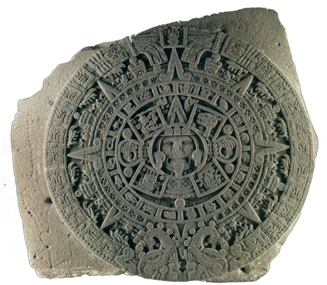The Mesoamerican worldview

This research develops the interpretation of four images of pre-Columbus time in the region known as Mesoamerica. It is based on the idea that various cultures in this area shared the same view of the world (there are, of course, differences in details, but generally it is the same), and that in this world view there is a hard nucleus, resistant to change throughout time.
The choosing of these images obeys the perception that it is about four schematic representations of the four basic world view characteristics. In other words, four cosmograms.
Two images were chosen that appear to be similar, they both have the same base, a codex, which come from different relatively distant cultures (the Mayan and the Mixtec). The other two cosmograms were chosen with contrasts, the base material (a painted wall and a monolith), and the time gap, from 8 to 9 centuries.
Each cosmogram was the object of a specific thorough investigation, in which some of the components that had not been yet specified, were identified here, and in some cases more general interpretations were built. Also, some of the theories that are currently in vogue were discussed and questioned, and in all cases those things that have not been determined, were tried to be determined with more clarity. In those cases, we advanced in hypothesis of different importance.
More than wanting to advance in each particular investigation, we used the comparison of the four cosmograms. The more cosmograms were used, the greater interpretative potential was verified. This multiple comparison is suggested not only as a method for the study of cosmograms in general, but also of other important representations that may not be labeled as a cosmogram but that also have a need to keep the similarities with the structure of the cosmos.
The basic characteristics of the cosmos seem to be: the preeminence of a central axis that has an ulterior unfolding in a four-part structure; as a consequence, the existence of four cosmic axes, frequently used as trees with various birds. To the earthly plane, there seems to be a representation of the flow of time, in a levorotatory (counterclockwise) manner and it is also sometimes distributed in its respective cardinal regions of origin. Diverse symbols are added, beings, animals or plants, that emphasize the nature of each cosmic area. However, these characteristics are never represented at the same time, some are insinuated through various resources.
References
Doctoral Thesis: "La imagen bajo la perspectiva de la cosmovisión: cuatro cosmogramas precolombinos mesoamericanos." read by Montserrat Camacho from the Department of Art and Musicology from the UAB and supervised by Victòria Solanilla Demestre and Gabriel Espinosa Pineda.


